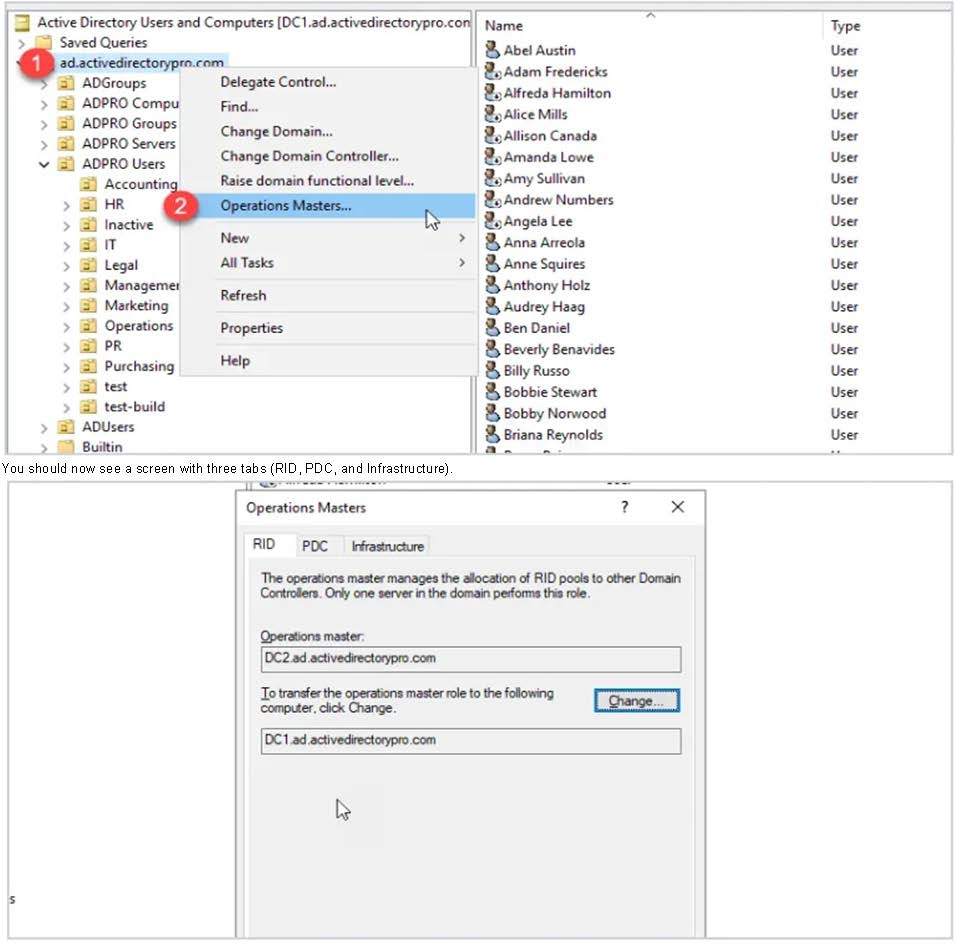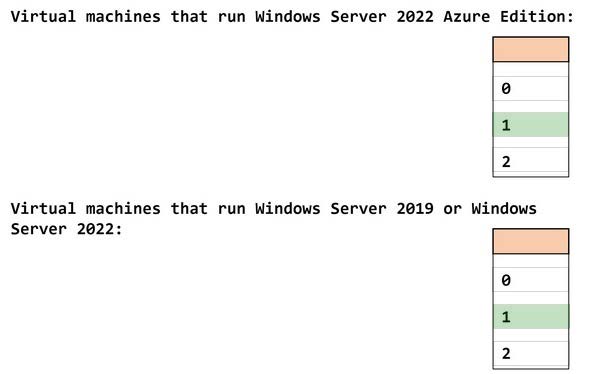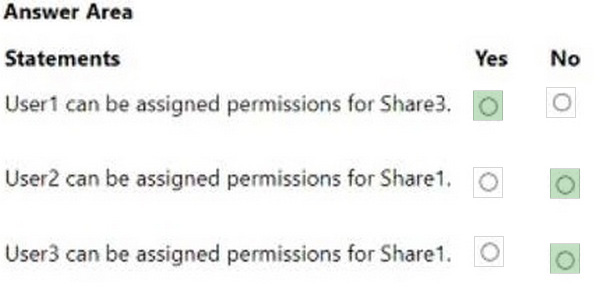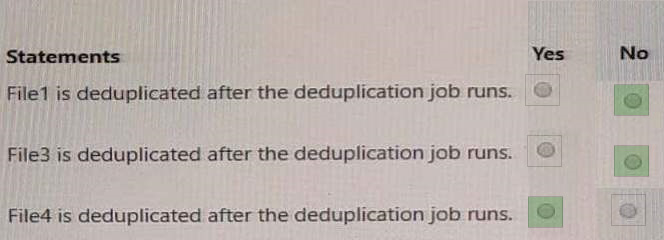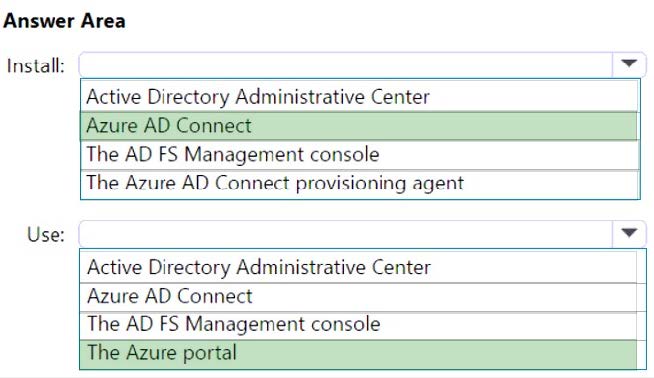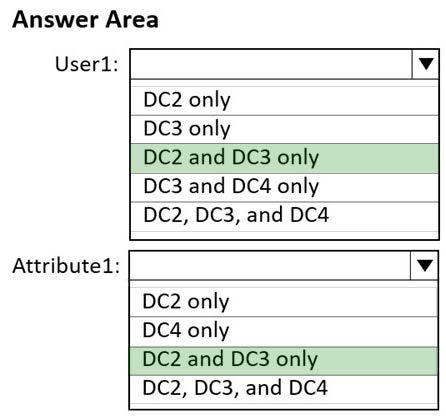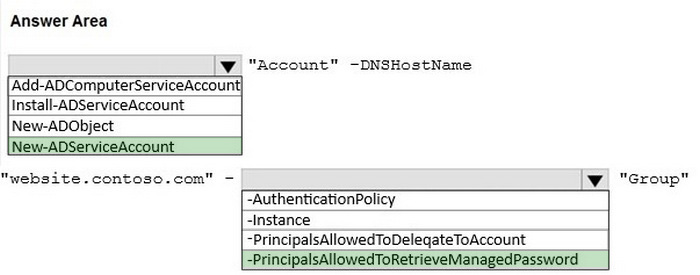Exam Details
Exam Code
:AZ-800Exam Name
:Administering Windows Server Hybrid Core InfrastructureCertification
:Microsoft CertificationsVendor
:MicrosoftTotal Questions
:247 Q&AsLast Updated
:Mar 24, 2025
Microsoft Microsoft Certifications AZ-800 Questions & Answers
-
Question 181:
HOTSPOT
Your network contains an Active Directory Domain Services (AD DS) domain. The domain contains the domain controllers shown in the following table.

You need to configure DC3 to be the authoritative time server for the domain.
Which operations master role should you transfer to DC3, and which console should you use? To answer, select the appropriate options in the answer area.
NOTE: Each correct selection is worth one point.
Hot Area:
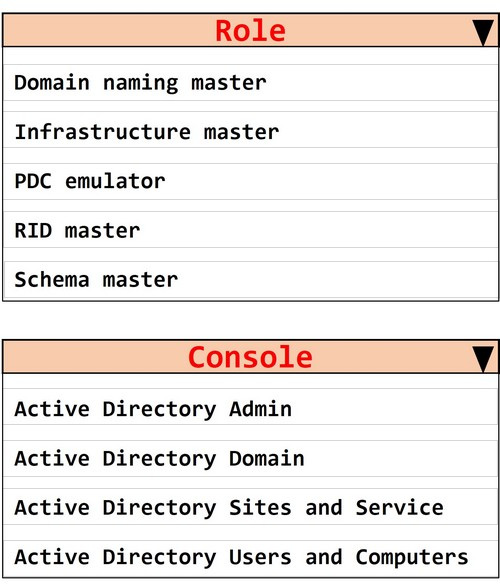
-
Question 182:
HOTSPOT
Your on-premises network contains a server named Server1 and uses an IP address space of 192.168.10.0/24.
You have an Azure virtual network that contains a subnet named Subnet1. Subnet1 uses an IP address space of 192.168.10.0/24.
You need to migrate Server1 to Subnet1. You must use Azure Extended Network to maintain the existing IP address of Server1.
What is the minimum number of virtual machines that you should deploy? To answer, select the appropriate options in the answer area.
NOTE: Each correct selection is worth one point
Hot Area:
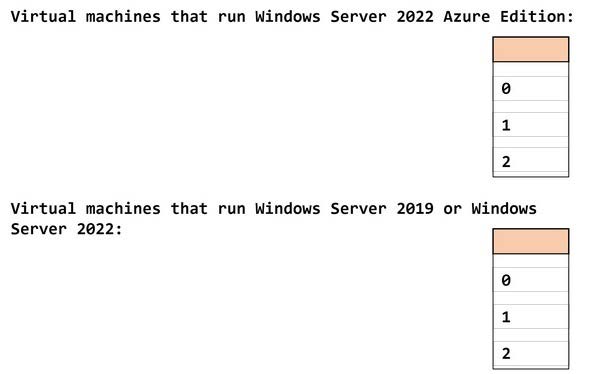
-
Question 183:
HOTSPOT
Your network contains an Active Directory Domain Services (AD DS) forest named contoso.com.
The forest contains a child domain named east.contoso.com and the servers shown in the following table.

You need to create a folder for the Central Store to manage Group Policy template files for the entire forest.
What should you name the folder, and on which server should you create the folder?
To answer, select the appropriate options in the answer area.
NOTE: Each correct selection is worth one point.
Hot Area:

-
Question 184:
HOTSPOT
Your network contains two Active Directory forests and a domain trust as shown in the following exhibit.
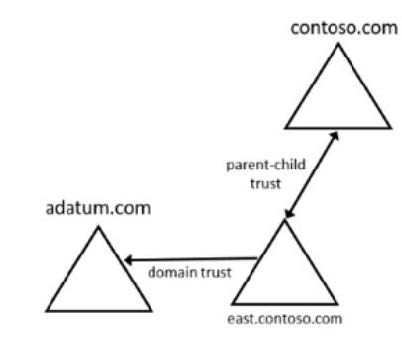
The domain trust has the following configurations:
1.
Name: adatum.com
2.
Type: External
3.
Direction: One-way. outgoing
4.
Outgoing trust authentication level: Domain-wide authentication
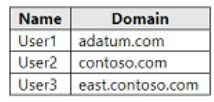
The forests contain the network shares shown in the following table.
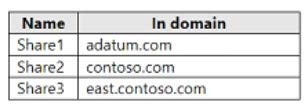
For each of the following statements, select Yes if the statement is true. Otherwise, select No. NOTE: Each correct selection is worth one point.
Hot Area:
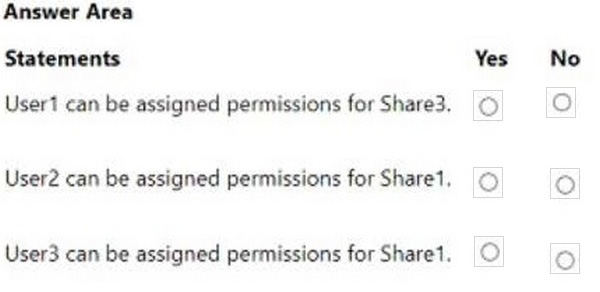
-
Question 185:
HOTSPOT
You have a server named Server1 that has the Hyper-V server role installed. Server1 hosts the virtual machines shown in the following exhibit.

Use the drop-down menus to select the answer choice that completes each statement based on the information presented in the graphic.
NOTE: Each correct selection is worth one point.
Hot Area:
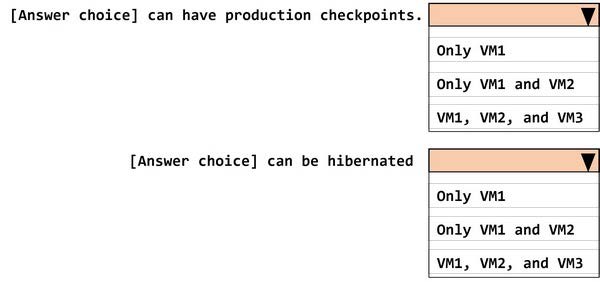
-
Question 186:
HOTSPOT
You have a server named Server1 that runs Windows Server and contains three volumes named C, D, and E.
Files are stored on Server1 as shown in the following table.

For volume D, Data Deduplication is enabled and set to General purpose file server. You perform the following actions:
1.
Move File1 to volume D.
2.
Copy File2 to volume D and name the copy File4.
3.
Move File3 to volume E
For each of the following statements, select Yes if the statement is true. Otherwise, select No. NOTE: Each correct selection is worth one point.
Hot Area:
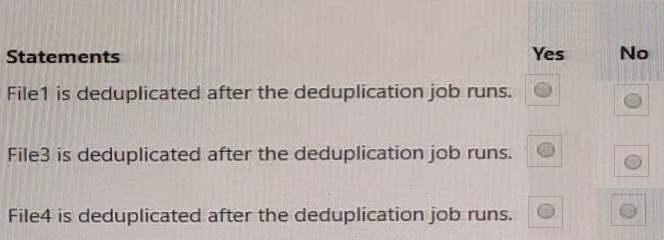
-
Question 187:
HOTSPOT
Your network contains an on-premises Active Directory Domain Services (AD DS) domain named contoso.com that syncs with an Azure AD tenant. The tenant contains a group named Group1 and the users shown in the following table.

Domain/OU filtering in Azure AD Connect is configured as shown in the Filtering exhibit. (Click the Filtering tab.)

You review the Azure AD Connect configurations as shown in the Configure exhibit. (Click the Configure tab.)
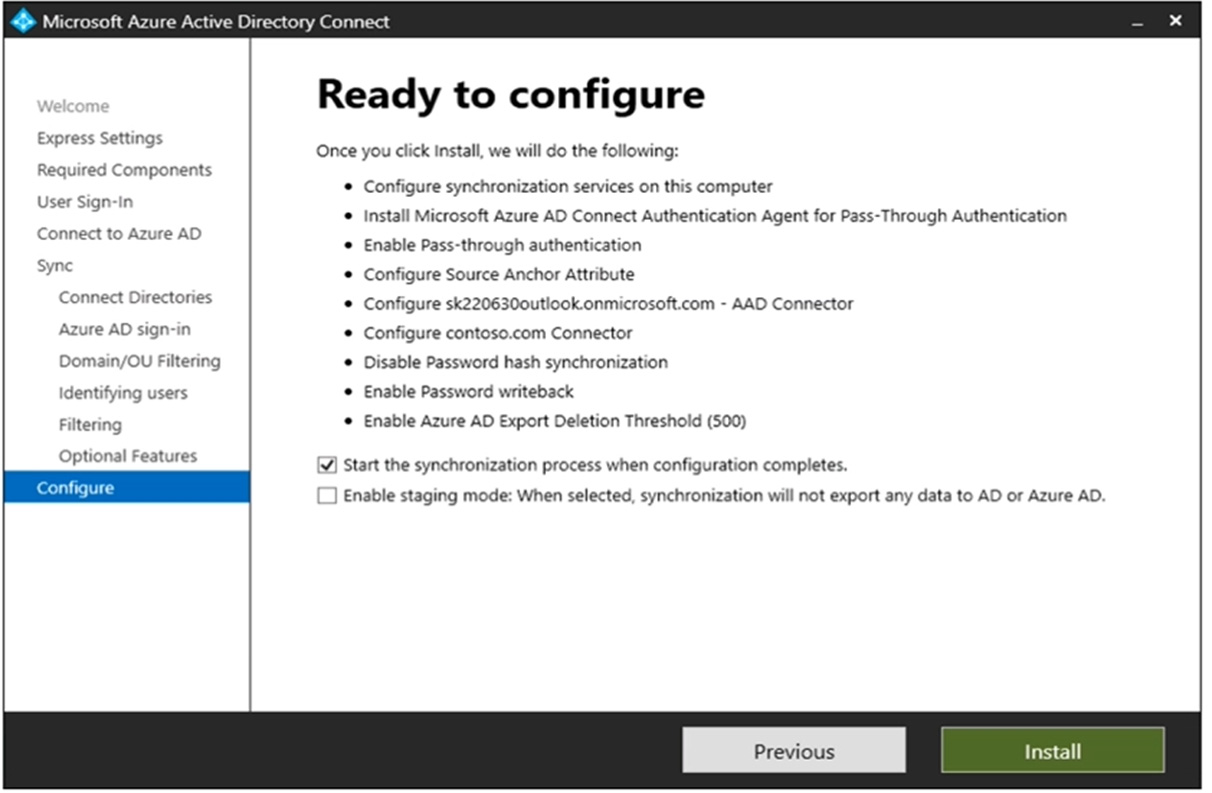
For each of the following statements, select Yes if the statement is true. Otherwise, select No.
NOTE: Each correct selection is worth one point.
Hot Area:

-
Question 188:
HOTSPOT
Your on-premises network contains an Active Directory Domain Services (AD DS) domain.
You plan to sync the domain with an Azure AD tenant by using Azure AD Connect cloud sync.
You need to meet the following requirements:
1.
Install the software required to sync the domain and Azure AD.
2.
Enable password hash synchronization.
What should you install, and what should you use to enable password hash synchronization? To answer, select the appropriate options in the answer area.
NOTE: Each correct selection is worth one point.
Hot Area:
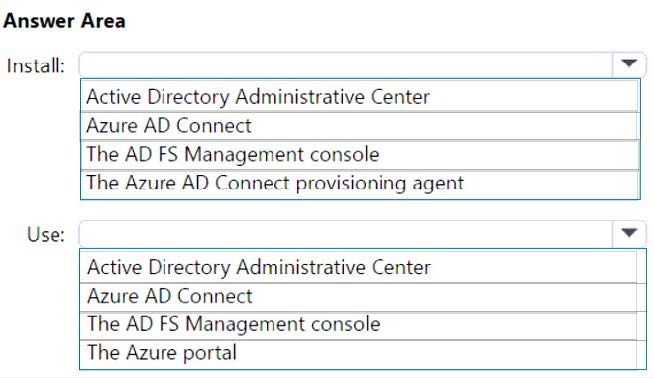
-
Question 189:
HOTSPOT
Your network contains two Active Directory Domain Services (AD DS) forests as shown in the following exhibit.
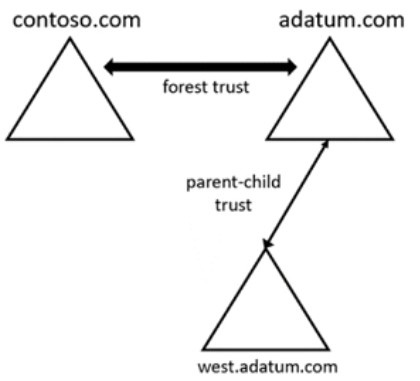
The forests contain the domain controllers shown in the following table.

You perform the following actions on DC1:
1.
Create a user named User1.
2.
Extend the schema with a new attribute named Attribute1.
To which domain controllers are User1 and Attribute1 replicated? To answer, select the appropriate options in the answer area.
NOTE: Each correct selection is worth one point.
Hot Area:

-
Question 190:
HOTSPOT
You have an Active Directory Domain Services (AD DS) domain that contains a group named Group1.
You need to create a group managed service account (gMSA) named Account1. The solution must ensure that Group1 can use Account1.
How should you complete the script? To answer, select the appropriate options in the answer area.
NOTE: Each correct selection is worth one point.
Hot Area:
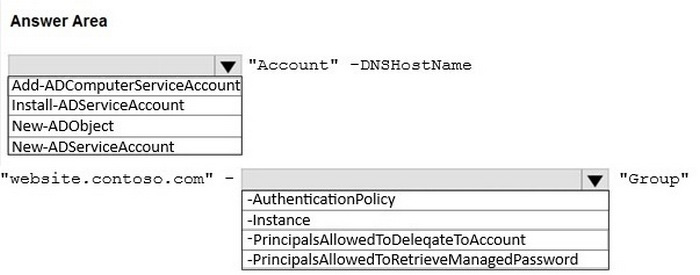
Related Exams:
62-193
Technology Literacy for Educators70-243
Administering and Deploying System Center 2012 Configuration Manager70-355
Universal Windows Platform – App Data, Services, and Coding Patterns77-420
Excel 201377-427
Excel 2013 Expert Part One77-725
Word 2016 Core Document Creation, Collaboration and Communication77-726
Word 2016 Expert Creating Documents for Effective Communication77-727
Excel 2016 Core Data Analysis, Manipulation, and Presentation77-728
Excel 2016 Expert: Interpreting Data for Insights77-731
Outlook 2016 Core Communication, Collaboration and Email Skills
Tips on How to Prepare for the Exams
Nowadays, the certification exams become more and more important and required by more and more enterprises when applying for a job. But how to prepare for the exam effectively? How to prepare for the exam in a short time with less efforts? How to get a ideal result and how to find the most reliable resources? Here on Vcedump.com, you will find all the answers. Vcedump.com provide not only Microsoft exam questions, answers and explanations but also complete assistance on your exam preparation and certification application. If you are confused on your AZ-800 exam preparations and Microsoft certification application, do not hesitate to visit our Vcedump.com to find your solutions here.

